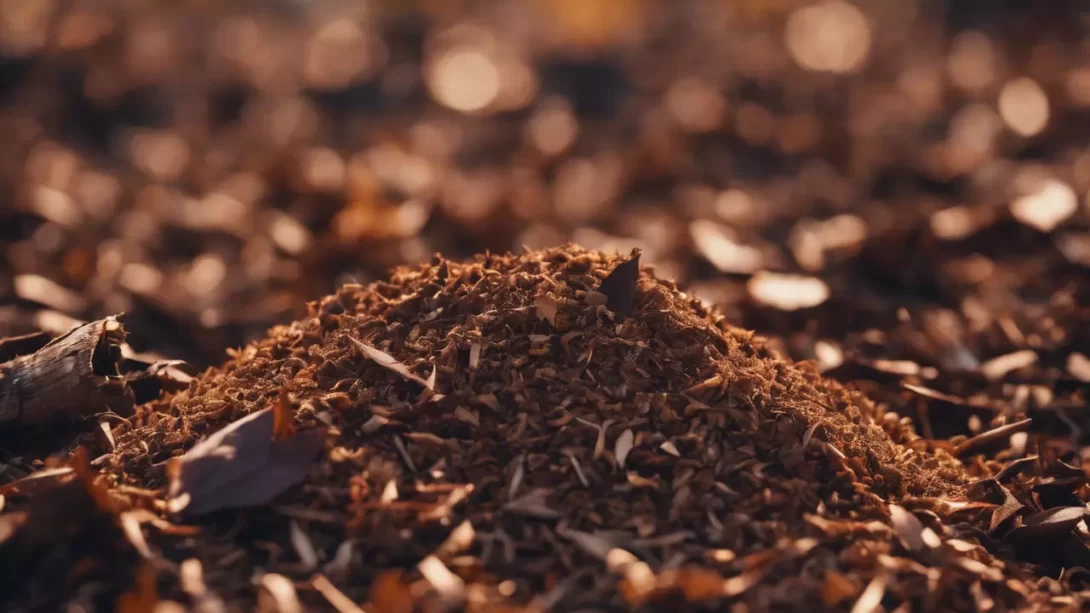Mulch is a vital component in gardening, serving both functional and aesthetic purposes. It helps in weed control, soil moisture retention, and can even enhance soil quality. However, the color of the mulch can also play a significant role in the overall look and health of your garden. Different mulch colors not only offer varied visual appeals but can also impact soil temperature and plant growth. This guide will help you understand the implications of different mulch colors and how to select the best one for your garden.
Different Mulch Colors
Commonly used mulch colors include black, brown, red, and natural or undyed. Each color has its method of creation and unique appearance. Dyed mulches are often made from wood chips or bark and colored using vegetable-based or synthetic dyes. Natural mulches, on the other hand, retain their original color and are often less processed.
Black Mulch
Black mulch provides a stark contrast in the garden, making it a popular choice for highlighting green foliage and colorful flowers. It’s known for its ability to absorb and retain heat, which can be beneficial in cooler climates by warming the soil and extending the growing season. However, in very hot climates, black mulch might overheat the soil, potentially harming root systems.
The use of black mulch is ideal for gardens with cool-season plants or for areas that require extra warmth. It’s also suitable for creating a modern, sophisticated look in landscape design. However, gardeners should be mindful of the heat absorption properties of black mulch, especially in regions with intense sun exposure.
Brown Mulch
Brown mulch is a classic choice that offers a natural, understated look, blending seamlessly with most landscapes. It’s less intense in terms of heat absorption compared to black mulch, making it a versatile option for a variety of climates. Brown mulch effectively retains moisture, helping to keep soil cool and reducing the need for frequent watering.
In terms of aesthetics, brown mulch complements both traditional and contemporary garden designs. It’s an excellent backdrop for highlighting the vibrant colors of flowers and foliage without being too visually dominating. Brown mulch is also beneficial in vegetable gardens, where it can maintain a more consistent soil temperature and moisture level.
Red Mulch
Red mulch is often chosen for its bold and vibrant appearance, adding a pop of color to garden landscapes. This mulch can create striking contrast with green plants and is particularly effective in accentuating certain areas of a garden. However, one should consider that red mulch may fade over time due to exposure to sunlight and weather elements, requiring more frequent replacement to maintain its bright color.
When using red mulch, it’s important to consider its compatibility with the existing garden design and plant colors. It works well in gardens with a lot of greens and neutral colors, where it can provide a dramatic visual effect. Red mulch is also a popular choice in themed gardens or as a way to draw attention to specific garden features.
Natural/Undyed Mulch
Natural or undyed mulch is the most eco-friendly option, often made from untreated wood chips, straw, or pine needles. This type of mulch integrates well with all garden types, lending a more organic and rustic appearance. It breaks down over time, adding nutrients to the soil and improving soil structure, which is beneficial for plant health.
Undyed mulch is ideal for gardeners seeking a more naturalistic approach to their landscaping. It blends in with the environment and supports a healthy garden ecosystem. Moreover, it’s a sustainable choice, as it usually involves less processing and no chemical dyes.
Factors to Consider When Choosing Mulch Color
Selecting the right mulch color for your garden involves more than just aesthetic preference. Several practical considerations should influence your decision:
- Compatibility with Garden Design: The mulch color should complement the overall theme and style of your garden. For instance, natural or brown mulch suits traditional and rustic garden designs, while black or red mulch might be more fitting for modern, formal landscapes.
- Local Climate: The color of the mulch can affect soil temperature. In warmer climates, lighter-colored mulch like natural or brown is preferable as it doesn’t absorb as much heat, whereas, in cooler climates, black mulch can be beneficial for warming the soil.
- Longevity and Maintenance: Dyed mulches like black and red may require more frequent replenishment as the color can fade over time, especially in areas with high sun exposure. Natural mulches might break down faster but enrich the soil in the process.
- Plant Health: Consider the needs of your plants. For instance, heat-loving plants might benefit from the warmer soil conditions created by darker mulches, while plants that prefer cooler soil might thrive better with lighter-colored mulch.
Conclusion
Choosing the right color for your garden mulch can significantly enhance the beauty and functionality of your garden. While personal taste is important, it’s crucial to balance this with practical considerations like local climate, maintenance requirements, and plant health. Whether you opt for the striking contrast of black or red mulch, the natural look of brown mulch, or the eco-friendly approach of natural mulch, each choice brings its unique benefits and aesthetics to your garden. By carefully considering these factors, you can create a visually appealing and healthy garden that reflects your style and supports the thriving of your plants.



